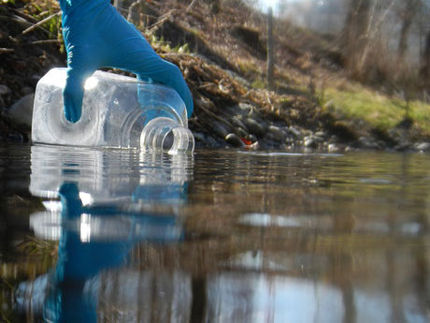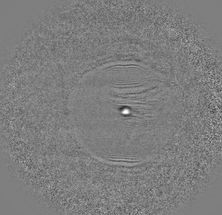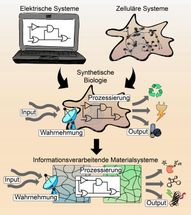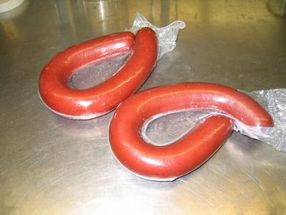New DNA-method tracks fish and whales in seawater
Researchers at University of Copenhagen lead the way for future monitoring of marine biodiversity and resources. By using DNA traces in seawater samples to keep track of fish and whales in the oceans. A half litre of seawater can contain evidence of local fish and whale faunas and combat traditional fishing methods. Their results are published in PLOS ONE.
"The new DNA-method means that we can keep better track of life beneath the surface of the oceans around the world, and better monitor and protect ocean biodiversity and resources," says PhD student Philip Francis Thomsen from the Centre for GeoGenetics, Natural History Museum of Denmark, University of Copenhagen.
Marine ecosystems worldwide are under threat with many fish species and populations suffering from human over-exploitation, which greatly impacts global biodiversity, economy and human health. Today, marine fish are largely surveyed using selective and invasive methods mostly limited to commercial species, and restricted to areas with favourable conditions.
However, researchers at Centre for GeoGenetics now lead the way for future monitoring of marine biodiversity. They have shown that seawater contains DNA from animals such as fish and whales. The species leave behind a trace of DNA that reveals their presence in the ocean based on water samples of just half a litre.
From freshwater to seawater
The development of the novel DNA monitoring approach was accomplished by PhD student Philip Francis Thomsen and Master's student Jos Kielgast from the Centre for GeoGenetics headed by Professor Eske Willerslev. In December last year, they showed that small freshwater samples contain DNA from several different threatened animals, and after having published these results they began to focus on seawater. Here it also proved possible to obtain DNA directly from the water, which originated from local species living in the area.
"We analysed seawater samples specifically for fish DNA and we were very surprised when the results started to show up on the screen. We ended up with DNA from 15 different fish species in water samples of just a half litre. We found DNA from both small and large fish, as well as both common species and rare guests. Cod, herring, eel, plaice, pilchard and many more have all left a DNA trace in the seawater," says Philip Francis Thomsen.
In the other study the researchers showed that it is also possible to obtain DNA from harbour porpoise in small water samples taken in the sea, so the approach is not only limited to fish, but can also track large marine mammals.
A new and efficient method
The study also compares the new DNA method with existing methods traditionally used for monitoring fish such as trawl and pots. Here, the DNA method proved as good as or mostly better than existing methods. Moreover, the DNA method has a big advantage that it can be performed virtually anywhere without impacting the local habitat – it just requires a sample of water. Associate Professor and fish expert Peter Rask Møller from the National History Museum of Denmark, who also participated in the study, is optimistic.
Most read news
Other news from the department science

Get the analytics and lab tech industry in your inbox
By submitting this form you agree that LUMITOS AG will send you the newsletter(s) selected above by email. Your data will not be passed on to third parties. Your data will be stored and processed in accordance with our data protection regulations. LUMITOS may contact you by email for the purpose of advertising or market and opinion surveys. You can revoke your consent at any time without giving reasons to LUMITOS AG, Ernst-Augustin-Str. 2, 12489 Berlin, Germany or by e-mail at revoke@lumitos.com with effect for the future. In addition, each email contains a link to unsubscribe from the corresponding newsletter.























































